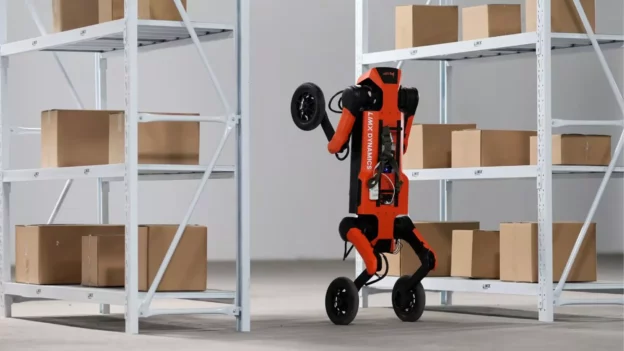The Chinese company LimX Dynamics decided to go further with its quadruped robot W1 , which now has the ability to stand up and walk on two legs. If we add to this that it already had four wheels equipped at its ends, the new reality means that more than a robot, it is a quite useful companion.
What’s new about the W1 quadruped robot
Last October, the W1 was presented for the first time , a robot clearly inspired by the Swiss-Mile developed by ETH-Zurich. Like this one, the W1 has four legs, each with a motorized wheel at its end.
To move on flat surfaces such as roads, sidewalks and floors, the W1 moves forward using its wheels, thus optimizing speed and energy efficiency. However, when facing obstacles, uneven terrain or stairs, the robot locks its wheels and uses them as feet, walking in quadruped mode.
Previously, a feature that distinguished the Swiss-Mile from the W1 was its ability to adopt a bipedal posture to perform specific tasks; Now, the W1 has also acquired this ability. Although technical details are scarce at the moment, it is known that the robot, when rolling, can rotate 360° , make 90° turns, maneuver between obstacles and recover from collisions without falling.
From four legs to two
The W1 can switch from quadruped to biped mode in less than a second, reaching a height of 152 cm (59.8 in) when fully upright. In a recent video, LimX shows the W1 walking on its two legs on a smooth surface, raising the question of whether it can climb stairs in bipedal mode, similar to the CL-1 humanoid robot. from the same company, or if you need to adopt your four-legged stance to do so. Additionally, it remains to be seen whether it can perform tasks such as grasping objects with its front paws while standing.

The W1 robot can maneuver between obstacles and recover from collisions. Source: LimX Dynamics.
Without a doubt, the development of robots with bipedal and quadrupedal capabilities raises new possibilities in human-robot interaction, especially in logistics and assistance tasks. This advance could mean greater efficiency and versatility in varied environments , improving the adaptability of robots to different contexts and needs.
Follow us on social networks and don’t miss any of our publications!
Inspenet.com YouTube LinkedIn Facebook Instagram X
Source and photo: newatlas

